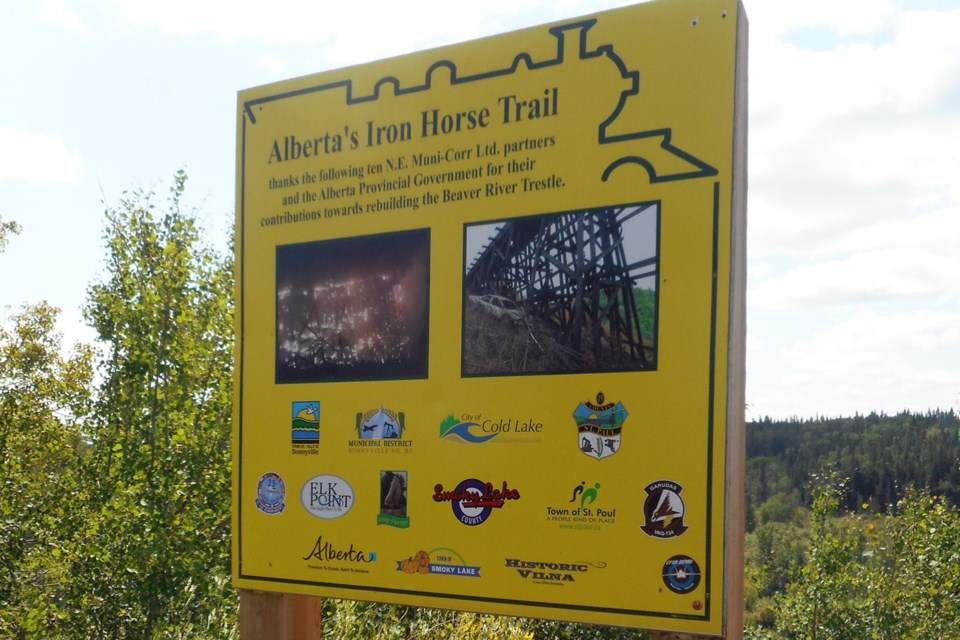LAKELAND – Iron Horse Trail users are being asked for their input on what can be done to improve the regional attraction.
The Riverland Recreational Trail Society (RRTS), the non-profit group that manages the Iron Horse Trail, received a grant from Trans Canada Trail to complete a 10-year strategic development plan. They're looking for feedback on ways to improve users' experience through an online survey available from July 13 until Aug. 13.
Marianne Janke, administrative coordinator for the Iron Horse Trail, noted there hasn’t been a lot of development and improvements for tourism amenities along the trail in its 17-year history.
“(The RRTS) certainly spent a lot of time looking after maintenance, safety issues, and so on, but the development and things have just been sitting in the same state it was when the railway tracks came up about 20 years ago,” she explained. “Other than some of the staging developments, a lot hasn’t been done to the trail in the other areas.”
Janke said the engagement portion is the largest component of the project, and they’re hoping to hear from municipalities, stakeholders, trail user groups, and the public.
“We’re looking for ideas out there to get feedback from everybody, and we’re looking for ideas on what could use improvement, what’s working, what’s not working, all of that kind of stuff.”
Due to the length of the Iron Horse Trail and the volunteer board who looks after it, Janke noted it’s been difficult in the past to hear from those who use the trail.
One example she used was three different wagon treks who recently made their way along the trail.
“I don’t have people to go out there and talk to the trail users as they’re out on the trail and say ‘hey, what did you think of the 200-km that you just travelled? Were there any issues? As horse users, is there some services that need to be developed along the trail for you?’”
While Janke has heard feedback from people who call in or leave a comment on their website, more is needed to get a better grasp of how they can improve the trail in the future.
The end goal of the strategic plan is to encourage more locals and tourists to take to the trail in the future.
RRTS president Marvin Bjornstad said in a press release, “The funding for the strategic plan is from the Trans Canada Trail and gives us the opportunity to figure out what we can all do to further develop our trail into a national attraction in our region.”
Janke described the Iron Horse Trail as “a huge tourism asset for our region.”
“We’re getting better known, people are becoming aware of us around the province and into adjoining provinces, but if we want to attract visitors from across the nation or internationally, then we need to be visitor ready. Instead of having rough back country amenities, maybe we need to step it up a bit and develop a little bit more visitor-friendly amenities.”
The society is open to any feedback and suggestions.
“The more responses we get, the better idea that we have for what communities are looking for. Whether you’re a trail user or you’re part of a group that uses the trail or you just support the trail, you might not have used it because it’s not convenient, whatever the reason, we would like to know,” expressed Janke.
The survey can be found at www.ironhorsetrail.ca and there's an online mapping tool that can be used to pinpoint areas on the trail that can be improved.



